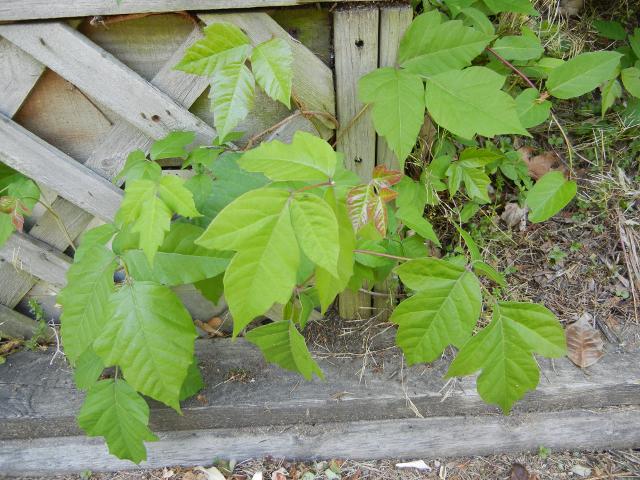Poison Ivy with More Than Three Leaflets in album plants
In Albums: plants

May 12th, 2011, by Alex Zorach
This photo shows a young poison ivy plant, growing in a garden at the southwest corner of Academy Street and Kells Avenue in Newark, Delaware. Poison ivy usually has leaves with sets of three leaflets (not leaves, as technically, the three leaflets are all part of the same leaf), prompting the saying "Leaves of three, let it be.".
This photo highlights a possible, but highly unusual occurrence: this poison ivy plant displays a few leaves with more than three leaflets. Poison ivy, like many plants with a large population and diverse genetic base, is a highly variable plant. There are numerous sub-species of poison ivy with sometimes widely different visual characteristics, and even a given sub-species may look widely variable from one plant to the next, often as a function of the the plant's growing condition. This particular plant shows lobed leaves (common in poison ivy) whose lobes are so deeply cut that a few of the lobes break the leaflets up into additional leaflets.
The centermost leaf, the small one tinged in dark red, shows five leaflets, and the larger, more mature leaf just to the left shows four leaflets, where the tip leafleaf was divided on one side but not the other.
This same phenomenon is more commonly observed on the poison-ivy "lookalike", the box-elder, which is a species of maple. Box elder is easily distinguished from poison ivy by its opposite leaf pattern (poison ivy has alternate leaves), and upright, tree-like habit (poison ivy usually climbs and rarely grows beyond shrub size while free-standing). The overall shape of the leaf and leaflets are very similar to poison ivy leaves. But the box elder frequently subdivides its larger leaves into five leaflets, although many leaves only have three.